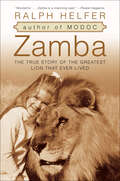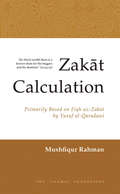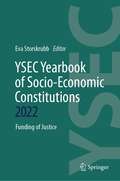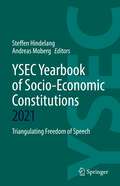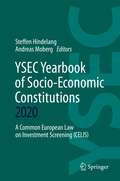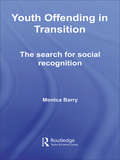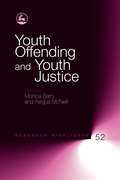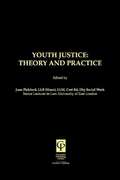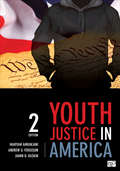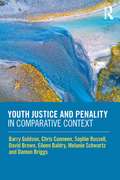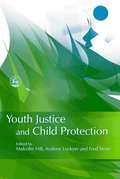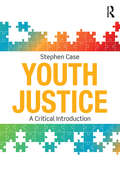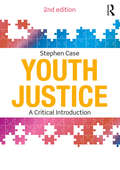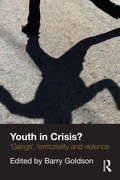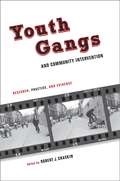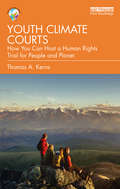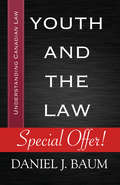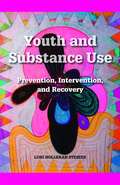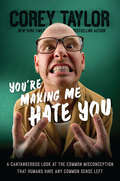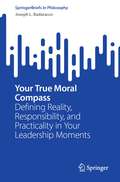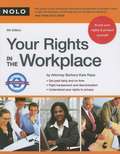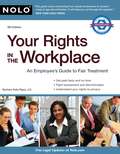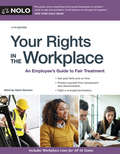- Table View
- List View
Zamba: The True Story of the Greatest Lion That Ever Lived
by Ralph HelferWhen Ralph Helfer, now one of Hollywood's top animal behaviorists, first began working, he was shocked by the cruelty that was accepted practice in the field. He firmly believed in "affection training" -- that love, not fear, should be the basis of any animal's development, even when dealing with the most dangerous of creatures. Then Zamba came into his life -- an adorable four-month-old lion cub that went on to prove Helfer's theories resoundingly correct.Over the next eighteen years, Zamba would thrive and grow, and go on to star in numerous motion pictures and television shows -- all the while developing a deep and powerful bond of love and affection with the man who raised him. By turns astonishing, hilarious, and poignant, Zamba is not only the unforgettable story of the relationship that Helfer would come to consider one of the most important in his life but also that of the amazing career and adventures of the greatest lion in the world.
Zakat Calculation
by Yusuf Al-Qaradawi Mushfiqur RahmanThis guidebook is an excellent reference for average readers on the concept, objectives, nature and principles underlying zakat (charity) in Islam.
YSEC Yearbook of Socio-Economic Constitutions 2022: Funding of Justice (YSEC Yearbook of Socio-Economic Constitutions #2022)
by Eva StorskrubbFunding of justice has significant consequences for the enforcement of rights and impacts directly on access to justice and the right to a fair trial as constitutional rights. Access to justice in turn essentially impacts on the effective enjoyment of any other constitutional right, since having the actual means to access a court in case of a potential breach strengthens that right. Public funding, such as legal aid, has come under pressure due to the reality of financial austerity measures and the tightening public budgets in many countries. This has contributed to privatization and marketisation of funding in ever more jurisdictions. Private forms of funding include inter alia litigation insurance, third-party litigation finance and crowdfunding, as well as different forms of assigning or selling claims. As public funding is in decline and as market liberalization in the field of justice increases, crucial questions related to the rule of law, access to justice and social and economic development, in the intersection between states, citizens and business are raised. For example, potential questions of conflict of interest and how to ensure a basic level of equality of access to funding, whilst at the same time protecting market freedom. Some of the contributions in the volume deal with the consequences of privatization of funding of justice on access to justice from a general, principled and theoretical perspective. Other contributions deal with specific regulatory developments or issues at the EU level, alternatively at the local level in specific jurisdictions. Further contributions deal with crucial issues of funding of justice in environmental matters, that are increasingly relevant and topical in practice.
YSEC Yearbook of Socio-Economic Constitutions 2021: Triangulating Freedom of Speech (YSEC Yearbook of Socio-Economic Constitutions #2021)
by Steffen Hindelang Andreas MobergThis volume addresses contemporary challenges, enabled by modern technology, that concern upholding freedom of speech where it conflicts with social rights, such as respect for private and family life, and with economic rights, such as the freedom to conduct business or the right to free movement. In today’s networked world, technological shifts happen faster than most people even realize. Some of these shifts have made us all potentially powerful: media powerful. We used to sit in silence in front of newspapers and TV screens, and the world was explained to us by just a few sources. Today, thanks to the Internet, social media, and Web 2.0, we can not only share our own thoughts with everyone in a more self-determined way, but we can also take part in public debate and even co-shape it ourselves. Of course, the Internet is not a counter-design to the communication (power) structures of the past. Gains in communicative self-determination are threatened due to algorithmisation, platformisation, and value extraction from self-created private markets. At the same time, the empowerment of the individual challenges the old “grand speakers” who are suddenly detecting “fake news”, echo chambers, and filter bubbles everywhere on the Internet. Internet-based communication allegedly hinders us from the “one truth”; as if newspaper hoaxes, propaganda, and narrow-mindedness were an invention of the Internet. The current heated debate over “fake news”, copyright, and “upload filters” shows that we are unsure of how to deal with the newer and more complex phenomena of Internet-based speech. This is due in no small part to the fact that an important benchmark – our constitutional compass – is still firmly rooted in the past. Constitutions change far more slowly than technologies. Societal changes can drive constitutional changes; but what about normative content control? Today, there are already demands for “old-school clarity”: truth filters on social media platforms, horrendous sums of liability for platforms that encourage (overly)thorough cleaning up. However, it is equally true that private individuals “regulate”: they decide what is found on the Internet and who may post on a given platform. Accounting for all interests at play and striking a “fair” balance that avoids both a public and private over- and under-regulation is a complex matter. The authors of this volume not only provide reflections in their highly topical contributions, but also share their understanding of what constitutes a fair balance within the larger frame of freedom of speech in a digital age.
YSEC Yearbook of Socio-Economic Constitutions 2020: A Common European Law on Investment Screening (CELIS) (YSEC Yearbook of Socio-Economic Constitutions #2020)
by Steffen Hindelang Andreas MobergThis book presents the very first, interdisciplinarily grounded, comprehensive appraisal of a future “Common European Law on Investment Screening”. Thereby, it provides a foundation for a European administrative law framework for investment screening by setting out viable solutions and evaluating their pros and cons. Daimler, the harbour terminal in Zeebrugge, or Saxo Bank are only three recent examples of controversially discussed company takeovers in Europe. The “elephant in the room” is China and its “Belt and Road Initiative”. The political will in Europe is growing to more actively control investments flowing into the EU. The current regulatory initiatives raise several fundamental, constitutional and regulatory issues. Surprisingly, they have not been addressed in any depth so far. The book takes stock of the current rather fragmented regulatory approaches and combines contributions from leading international academics, practitioners, and policy makers in their respective fields. Due to the volume’s comprehensive approach, it is expected to influence the broader debate on the EU’s upcoming regulation of this matter. The book is addressed to participants from academia as well as to representatives from government, business, and civil society.
Youth Offending in Transition: The Search for Social Recognition
by Monica BarryTaking a new approach to youth crime, this book argues that the transition from childhood to adulthood can be an isolating and disempowering experience for young people. Children and young people are inherently vulnerable because of their age and status – they are a minority group, with the potential for being exploited, discriminated against, dominated and disrespected by adults. Youth Offending in Transition explores how their treatment by adult society may lead young people to resort to crime as a means of gaining respect from their peers. Using concepts of capital and the narratives of young offenders themselves, this book is based on original research into the reasons why young people start and stop offending. It discusses the following topics: criminal theory and the significance of youth transitions to the ‘age-crime curve’ social identity and reputation amongst young people social inequalities and their influence on youth transitions the criminalization and discrimination of young people by adults the importance of social recognition in reducing offending.
Youth Offending and Youth Justice
by Fergus Mcneill Monica BarryHow is the modern world shaping young people and youth crime? What impact is this having on the latest policies and practice? Are current youth justice services working? With contributions from leading researchers in the field, this book offers an insightful, scholarly and critical analysis of such key issues. Youth Offending and Youth Justice engages constructively with current policy and practice debates, tackling issues such as the criminalisation and penalisation of youth, sentencer decision-making, the incarceration of young people and the role of public opinion. It also features an applied focus on professional practice. Drawing on a wide range of high-quality research, this book will enrich the work of practitioners, managers, policy-makers, students and academics in social work, youth work, criminal justice and youth justice in the UK and beyond.
Youth Justice: Theory & Practice
by Jane PickfordThis innovative text examines contemporary issues in youth justice in the light of the sweeping reforms introduced by the Crime and Disorder Act 1998 and the Youth Justice and Criminal Evidence Bill 1999. It brings together current debates in both the practice and theory of youth justice intervention and, in the light of the governments inter-agency approach to the problem of youth criminality, provides an inter-disciplinary examination of these discussions. Including contributions from both academics, magistrates and social work practitioners, it is a useful text for students of criminology, law and social work, as well as a valuable resource for youth justice practitioners.
Youth Justice in America
by Maryam Ahranjani Andrew G. Ferguson Jamin B. RaskinYouth Justice in America, Second Edition engages students in an exciting, informed discussion of the U.S. juvenile justice system and fills a pressing need to make legal issues personally meaningful to young people. Written in a straightforward style by Maryam Ahranjani, Andrew Ferguson and Jamie Raskin – all of whom actively work in the area of juvenile justice -- the book addresses tough, important issues that directly affect today's youth, including the rights of accused juveniles, search and seizure, self-incrimination and confession, right to appeal, and the death penalty for juveniles. Focusing on cases that relate to the Fourth, Fifth, Sixth, and Eighth Amendments to the U.S. Constitution, the subject matter comes alive through a wide variety of in-book learning aids.
Youth Justice in America
by Jamin B. Raskin Maryam Ahranjani Andrew G. FergusonYouth Justice in America, Second Edition engages students in an exciting, informed discussion of the U.S. juvenile justice system and fills a pressing need to make legal issues personally meaningful to young people. Written in a straightforward style by Maryam Ahranjani, Andrew Ferguson and Jamie Raskin – all of whom actively work in the area of juvenile justice -- the book addresses tough, important issues that directly affect today's youth, including the rights of accused juveniles, search and seizure, self-incrimination and confession, right to appeal, and the death penalty for juveniles. Focusing on cases that relate to the Fourth, Fifth, Sixth, and Eighth Amendments to the U.S. Constitution, the subject matter comes alive through a wide variety of in-book learning aids.
Youth Justice and Penality in Comparative Context
by Barry Goldson Chris Cunneen Sophie Russell David Brown Eileen Baldry Melanie Schwartz Damon BriggsThis book represents the first major analysis of Anglo-Australian youth justice and penality to be published and it makes significant theoretical and empirical contributions to the wider field of comparative criminology. By exploring trends in law, policy and practice over a forty-year period, the book critically surveys the ‘moving images’ of youth justice regimes and penal cultures, the principal drivers of reform, the core outcomes of such processes and the overall implications for theory building. It addresses a wide range of questions including: How has the temporal and spatial patterning of youth justice and penality evolved since the early 1980s to the present time? What impacts have legislative and policy reforms imposed upon processes of criminalisation, sentencing practices and the use of penal detention for children and young people? How do we comprehend both the diverse ways in which public representations of ‘young offenders’ are shaped, structured and disseminated and the varied, conflicting and contradictory effects of such representations? To what extent do international human rights standards influence law, policy and practice in the realms of youth justice and penality? To what extent are youth justice systems implicated in the production and reproduction of social injustices? How, and to what degree, are youth justice systems and penal cultures internationalised, nationalised, regionalised or localised? The book is essential reading for researchers, students and tutors in criminology, criminal justice, law, social policy, sociology and youth studies.
Youth Justice and Child Protection
by Malcolm Hill Andrew Lockyer Fred StoneThis book is an examination of recent developments in the areas of youth justice and child protection. It investigates how well young people and the societies in which they live are served by judicial and service systems. Consideration is given to those in care - in young offenders' institutions, foster families and residential homes - as well as those living with their families. A broad range of international experts discuss the largely segregated youth justice and children's legal and service systems in England and Wales, other parts of Western Europe and the US, and compare these with Scotland's integrated system. The implications of these arrangements are considered for the rights of children and parents on the one hand and society on the other. The contributors also provide insights into the rationale for current and proposed policies, as well as the efficacy of different systems. This book will be an important reference for policy-makers, social workers, lawyers, magistrates and equivalent decision makers, health professionals, carers, and all those working in youth justice and child protection. It is highly relevant for academics and students interested in children, citizenship, youth crime, child welfare and state-family relations.
Youth Justice: A Critical Introduction
by Stephen CaseThis book provides a comprehensive, student-friendly and critical introduction to youth justice in England and Wales, offering a balanced evaluation of its development, rationale, nature and evidence base. It explores the evolution of definitions and explanations of youth offending and examines the responses to it that constitute youth justice. Bringing together theory and practice, this book provides a balanced exposition of contemporary youth justice debates, including detailed discussions of governmental rationales and practical issues and an extensive evaluation of critical academic positions. It includes a range of features designed to engage and inspire students: ‘Stop and think’: Activities challenging students to reflect on important issues. ‘Conversations’: Discussions of key themes and issues from the perspectives and experiences of relevant stakeholders, including policy makers and activists. ‘Telling it like it is’: Testimonies giving voice to the personalised, subjective and contentious viewpoints of youth justice influencers. ‘Controversies and debates’: Prompts to stimulate students to question and critique established knowledge and understanding by considering alternative angles. ‘Recurring theme alerts’: Boxes flagging up recurring themes in the developing construction of youth offending and youth justice. This book is essential reading for students taking courses in youth justice, youth offending, youth crime, youth work and social policy.
Youth Justice: A Critical Introduction
by Stephen CaseThis book provides a comprehensive, student-friendly and critical introduction to youth justice in England and Wales, offering a balanced evaluation of its development, rationale, nature and evidence base. It explores the evolution of definitions and explanations of youth offending and examines the responses to it that constitute youth justice. Bringing together theory, policy and practice, this book provides a balanced exposition of contemporary youth justice debates, including detailed discussions of governmental rationales, policy developments, practical issues and an extensive evaluation of critical academic positions. It includes a range of features designed to engage and inspire students: ‘Stop and think’: Activities challenging students to reflect on important issues. ‘Conversations’: Discussions of key themes and issues from the perspectives and experiences of relevant stakeholders, including policy makers and activists. ‘Telling it like it is’: Testimonies giving voice to the personalised, subjective and contentious viewpoints of youth justice influencers. ‘Controversies and debates’: Prompts to stimulate students to question and critique established knowledge and understanding by considering alternative angles. ‘Recurring theme alerts’: Boxes flagging recurring themes in the developing construction of youth offending and youth justice. The new edition has been fully revised and updated and includes discussion of revised National Standards in Youth Justice, the new ‘Child First’ strategic objective for youth justice, the ‘trauma informed practice’ movement, the impact of coronavirus on children in the Youth Justice System and the continued impact of austerity on policy and practice. This book is essential reading for students taking courses in youth justice, youth offending, youth crime, youth work and social policy.
Youth in Crisis?: 'Gangs', Territoriality and Violence
by Barry GoldsonFew issues attract greater concern and censure than those that surround youth 'gangs'. Paradoxically, youth researchers have conventionally been reluctant to even use the term 'gang' but, more recently, such reluctance has receded. Indeed, it is increasingly claimed that – in particular urban 'territories' – youth gangs are commonplace, some young people are deeply immersed in violence and the carrying and use of weapons (particularly knives and firearms) is routine. Comprizing a series of essays from leading national and international researchers, this book subjects such claims to rigorous critical scrutiny. It provides a challenging and authoritative account of complex questions pertaining to urban youth identities, crime and social order. This book: locates the question of 'gangs' in both historical and contemporary contexts engages a spectrum of theoretical perspectives and analytical positions presents and analyzes cutting-edge empirical research addresses a range of previously neglected questions, including those pertaining to girls, young women and 'gangs'. Youth in Crisis? provides a vital resource for researchers, educators, policy-makers and practitioners with an interest in key questions facing criminology, sociology and social policy.
Youth Gangs and Community Intervention: Research, Practice, and Evidence
by Chaskin Robert J. Ed.Although a range of program and policy responses to youth gangs exist, most are largely based on suppression, implemented by the police or other criminal justice agencies. Less attention and fewer resources have been directed to prevention and intervention strategies that draw on the participation of community organizations, schools, and social service agencies in the neighborhoods in which gangs operate. Also underemphasized is the importance of integrating such approaches at the local level. In this volume, leading researchers discuss effective intervention among youth gangs, focusing on the ideas behind, approaches to, and evidence about the effectiveness of community-based, youth gang interventions. Treating community as a crucial unit of analysis and action, these essays reorient our understanding of gangs and the measures undertaken to defeat them. They emphasize the importance of community, both as a context that shapes opportunity and as a resource that promotes positive youth engagement. Covering key themes and debates, this book explores the role of social capital and collective efficacy in informing youth gang intervention and evaluation, the importance of focusing on youth development within the context of community opportunities and pressures, and the possibilities of better linking research, policy, and practice when responding to youth gangs, among other critical issues.
Youth Climate Courts: How You Can Host a Human Rights Trial for People and Planet
by Thomas A. KernsThis book focuses on Youth Climate Courts, a bold new tool that young people in their teens and twenties can use to compel their local city or county government to live up to its human rights obligations, formally acknowledge the climate crisis, and take major steps to address it. Tom Kerns shows how youth climate leaders can form their own local Youth Climate Court, with youth judges, youth prosecuting attorneys, and youth jury members, and put their local city or county government on trial for not meeting its human rights obligations. Kerns describes how a Youth Climate Court works, how to start one, what human rights are, what they require of local governments, and what governmental changes a Youth Climate Court can realistically hope to accomplish. The book offers young activists a brand new, user-friendly, cost-free, barrier-free, powerful tool for forcing local governments to come to terms with their obligation to protect the rights of their citizens with respect to the climate crisis. This book offers a unique new tool to young climate activists hungry for genuinely effective ways to directly move governments to aggressively address the climate crisis.
Youth and the Law
by Daniel J. BaumReal cases from the Supreme Court dealing with youth issues. Laws, as they relate to youth and youth issues, can be difficult to understand for those they are intended to serve. In the first book of the Understanding Canadian Law series, author Daniel J. Baum breaks down the Supreme Court of Canada’s decisions relating to youth in plain language intended for readers of all ages. Drawing on examples from recent Supreme Court rulings, Youth and the Law walks the reader through such controversial subjects as spanking, bullying, youth violence, and police in the schools. Each chapter contains prompts to encourage critical thinking. Youth and the Law is an objective introduction for all readers to better understand how law impacts the young.
Youth and Substance Use: Prevention, Intervention, and Recovery
by Lori Holleran SteikerThis book translates the best of what we know from research and practice into a "how to" book--how to understand, how to interact and intervene, how to maximize your impact, and how to transform societal perceptions beyond your practice. Although numerous texts address substance misuse in general, this book allows specializing undergraduates, graduate students, and practitioners to acquire knowledge and skills related to substance misuse specifically among youth populations.
Youth and Justice in Western States, 1815-1950: From Punishment To Welfare (World Histories of Crime, Culture and Violence)
by Jean Trépanier Xavier RousseauxThis book explores the treatment of junevile offenders in modern Western history. The last few decades have witnessed major debates over youth justice policies. Juvenile and youth justice legislation has been reviewed in a number of countries. Despite the fact that new perspectives, such as restorative justice, have emerged, the debates have largely focused on issues that bring us back to the inception of juvenile justice: namely whether youth justice ought to be more akin to punitive adult criminal justice, or more sensitive to the welfare of youths. This issue has been at the core of policy choices that have given juvenile justice its orientations since the beginning of the twentieth century. It also gave shape to the evolution that paved the way for the creation of juvenile courts in the nineteenth century. Understanding those early debates is essential if we are to understand current debates, and place them into perspective. Based on primary archival research, this comprehensive study begins by presenting the roots, birth and evolution of juvenile justice, from the nineteenth century up to the beginning of the twenty-first. The second part deals with nineteenth century responses to juvenile delinquency in England and Canada, while the third focuses on the welfare orientation that characterized juvenile courts in the first half of the twentieth century in Switzerland, the Netherlands, Germany and Belgium. Finally, the fourth part focuses on the perspective of the youths and their families in Belgium, France and Canada.
You're Making Me Hate You: A Cantankerous Look at the Common Misconception That Humans Have Any Common Sense Left
by Corey TaylorIn the tradition of the late great George Carlin, New York Times bestselling author and lead singer of Slipknot and Stone Sour Corey Taylor sounds off in hilarious fashion about the many vagaries of modern life that piss him off. Whether it’s people’s rude behavior in restaurants and malls, the many indignities of air travel, eye-searingly terrible fashion choices, dangerously clueless drivers, and--most of all--the sorry state of much modern music, Taylor’s humor and insight cover civil society’s seeming decline--sparing no one along the way, least of all himself. Holding nothing back and delivered in Taylor’s inimitable voice, You’re Making Me Hate You is a cathartic critique of the strange world in which we find ourselves.
Your True Moral Compass: Defining Reality, Responsibility, and Practicality in Your Leadership Moments (SpringerBriefs in Philosophy)
by Joseph L. BadaraccoThis book presents a new, powerful, and practical way of making final decisions on the hard, complex, uncertain problems of life and work. What if you have looked at the data, talked with trusted colleagues, and applied all the relevant managerial and ethical frameworks, but you still don't know what is right. How should you make your final decision?This crucial question is rarely asked or answered. And some standard answers – follow your moral compass, your conscience, or your values – offer more inspiration than practical guidance. This book argues that, when we make final, hard decisions, we learn what is right by defining – personally – what is right. We find moral clarity by creating it. The book presents a fresh, challenging, and practical perspective on our hardest decisions. It offers a new conceptual approach for teachers and scholars and practical guidance for leaders and managers.
Your Rights in the Workplace (8th edition)
by Barbara Kate RepaAttorney and legal journalist Repa uses plain language to present practical information on the legal rights of employees in the U.S. Coverage includes both federal and state regulations. A sampling of topics includes illegal firings, email privacy, family leave, on-the- job safety, sexual harassment, age discrimination, and retirement plans. The seventh edition has been updated to reflect new legislation regarding overtime pay. Annotation ©2006 Book News, Inc., Portland, OR (booknews.com)
Your Rights in the Workplace
by Barbara Kate Repa J.D.The laws that protect you in the workplace explained in one easy-to-read guide! Your Rights in the Workplace is the most complete handbook on workplace laws ever published -- it's a must-have for every employee. Your Rights in the Workplace covers everything from rules for hiring and getting paid through losing a job and unemployment benefits -- all in plain English. Get the facts on: illegal firings and layoffs challenging a job loss wages and hours privacy on your email and voice mail family and medical leave on-the-job safety and health health insurance and retirement plans workplace testing sexual harassment discrimination unemployment, disability and workers' compensation insurance The 9th edition is completely updated to provide the latest legislation and case law that affects employees in all 50 states, including changes to the Family and Medical Leave Act (FMLA), new rules on COBRA continuation of health insurance, and the new Genetic Information Nondiscrimination Act (GINA).
Your Rights in the Workplace: An Employee's Guide to Fair Treatment
by Barbara Kate Repa Sachi BarreiroYour Rights in the Workplace is an invaluable reference for every employee. Whether you have questions about your paycheck, discrimination, layoffs, or benefits, you'll find answers here. Get the facts on: wages, hours, and breaks drug and alcohol testing illegal discrimination and harassment wrongful termination vacation, sick leave, and FMLA leave on-the-job health and safety health insurance and retirement plans, and unemployment, disability, and workers' compensation insurance. Your Rights in the Workplace is an easy-to-use guide on the most common legal issues employees face in the workplace. The 11th edition is updated with the latest court decisions and legislation and includes over a dozen 50-state charts.
